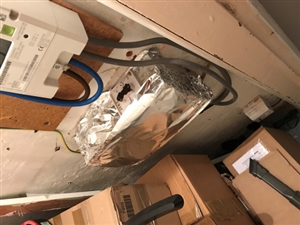
Stewart Mason:
I got called to a property today. The RCD had started tripping after a smart meter was installed. The insulation resistance between line and cpc was over 300 Mohm on all circuits. The RCD was an MEM unit in a memera 2000 consumer unit.
Whilst at the property the RCD did not trip. I did a google search and one result suggested the RF from the smart meters transceiver was upsetting the RCD. When the smart meter was first energised I guess it starts communicating with the supplier causing said RF.
We have had 3 properties now all with MEM RCD's which have started tripping after smart meters have been installed, normally in the early hours of the day.
Just wondering if anyone else has experienced of this issue?



The EMC requirements for RCDs have become more onerous over time. Whilst an RCD say 10 years old might be expected to deal with frequencies of 2.4 GHz, say, that wasn't necessarily the case 20 years ago.
However, installation of an RCD close to [almost adjacent to] a source of disturbances without mitigation (metallic enclosure) would not necessarily comply with BS 7671 requirements for EMC. Whilst the use of metal consumer units helps avoid problems for electronic components in the consumer unit, it can also adversely affect the wireless signal of the smart meter, as can all of the copper within the consumer unit anyway.
To be honest, not well thought-through at all if the wireless adaptor is too close to the consumer unit or concentrations of wiring. Separation distance of at least 100 mm are recommended.
We're about to take you to the IET registration website. Don't worry though, you'll be sent straight back to the community after completing the registration.
Continue to the IET registration site